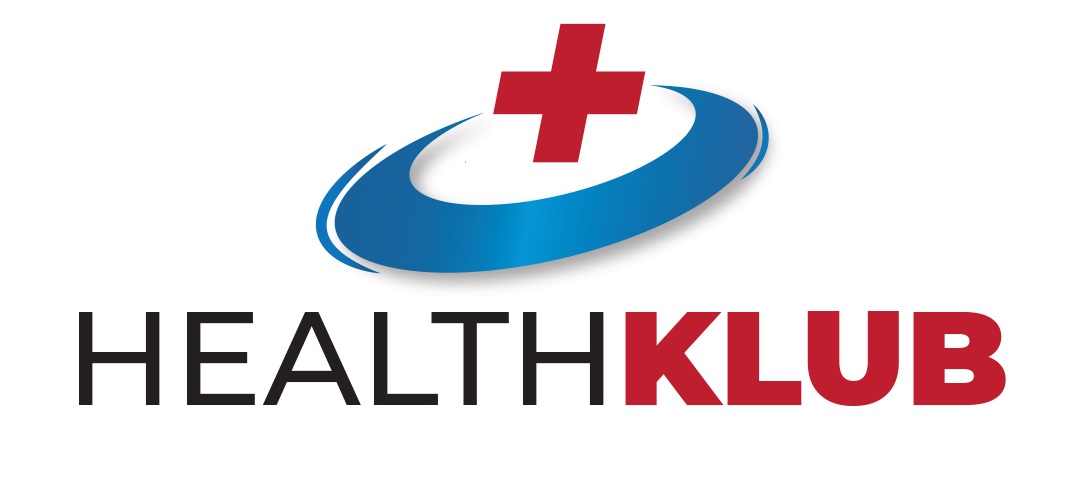Introduction
Migraines can be more than just a headache; they are often accompanied by intense pain, sensitivity to light and sound, and other debilitating symptoms. If you’re one of the millions of people who experience migraines, finding effective coping strategies is essential. In this blog post, we’ll explore practical tips to help you manage and cope with migraines, allowing you to regain control and improve your quality of life.
Identify Triggers
Identifying triggers is a key aspect of managing and preventing migraines. Triggers are specific factors or events that can contribute to the onset of a migraine headache. Here’s an explanation of the process and the importance of identifying triggers:
- Definition of Triggers: Triggers are external or internal factors that can set off a chain of events leading to a migraine attack. These factors vary from person to person, and what triggers migraines for one individual may not affect another.
- Common Migraine Triggers:
- Foods: Certain foods or beverages such as chocolate, aged cheese, caffeine, and alcohol can be triggers for some people.
- Stress: Emotional or physical stress is a common trigger. High-stress levels can lead to the release of certain chemicals in the brain that may contribute to migraines.
- Lack of Sleep: Irregular sleep patterns or insufficient sleep can trigger migraines in some individuals.
- Hormonal Changes: Fluctuations in hormones, especially in women during menstruation, pregnancy, or menopause, can be associated with migraines.
- Environmental Factors: Changes in weather, exposure to strong smells, or certain environmental conditions can trigger migraines in susceptible individuals.
- Keeping a Migraine Diary:
- A migraine diary is a tool that helps individuals track their migraine episodes and identify potential triggers.
- Record the date, time, and duration of each migraine episode.
- Note the foods consumed, stress levels, sleep patterns, and any environmental factors before and during each migraine.
- Identify patterns by looking for commonalities among different episodes.
- Benefits of Identifying Triggers:
- Personalized Management: Knowing your triggers allows for a more personalized approach to migraine management. Individuals can then take specific steps to avoid or minimize exposure to identified triggers.
- Preventive Measures: Once triggers are identified, lifestyle modifications can be made to reduce the likelihood of migraines. This may include dietary changes, stress management techniques, and maintaining regular sleep patterns.
- Effective Treatment: Understanding triggers can also guide healthcare providers in prescribing medications or therapies tailored to address specific triggers.
Establish a Consistent Sleep Schedule
Establishing a consistent sleep schedule is crucial for overall health and well-being, and it can be particularly important for migraine management. Here’s an explanation of the benefits and strategies involved in maintaining a regular sleep routine:

- Importance of Consistent Sleep:
- Lack of sleep is a common trigger for migraines. Irregular sleep patterns, insufficient sleep, or poor sleep quality can contribute to the onset of migraines in susceptible individuals.
- Consistent and adequate sleep is essential for various physiological processes, including hormone regulation, immune function, and overall brain health.
- Recommended Sleep Duration:
- The recommended amount of sleep for adults is typically between 7 to 9 hours per night. This range can vary slightly from person to person, but maintaining this duration on a consistent basis is generally beneficial for health.
- Benefits of a Consistent Sleep Schedule for Migraine Management:
- Reduced Trigger Potential: By adhering to a regular sleep schedule, individuals can minimize the likelihood of sleep-related triggers for migraines.
- Stabilized Circadian Rhythms: A consistent sleep routine helps regulate the body’s circadian rhythms, promoting a more stable internal clock. This, in turn, can positively impact various bodily functions, including hormonal balance.
- Improved Sleep Quality: Establishing a routine signals to the body that it’s time to wind down, promoting better sleep quality. Quality sleep is as important as quantity in supporting overall health.
- Creating a Relaxing Bedtime Routine:
- Wind Down Before Bed: Engage in calming activities in the hour leading up to bedtime. This can include reading a book, practicing relaxation techniques, or taking a warm bath.
- Limit Screen Time: Reduce exposure to electronic devices with screens, as the blue light emitted can interfere with the production of the sleep hormone melatonin.
- Maintain a Comfortable Sleep Environment: Ensure that your bedroom is conducive to sleep by keeping it dark, quiet, and at a comfortable temperature.
- Tips for Establishing and Maintaining a Consistent Sleep Schedule:
- Set a Regular Bedtime and Wake-Up Time: Aim to go to bed and wake up at the same time every day, even on weekends.
- Avoid Napping Too Late in the Day: If you need to nap, do so earlier in the day to avoid interfering with nighttime sleep.
- Limit Caffeine and Stimulants: Reduce consumption of caffeinated beverages and stimulants, especially in the afternoon and evening.
Stay Hydrated
Staying hydrated is an important aspect of overall health and can play a role in preventing migraines for some individuals. Here’s an explanation of why hydration matters and some tips for maintaining proper fluid balance to reduce the risk of migraines:

- Dehydration and Migraines:
- Dehydration is recognized as a potential trigger for migraines in some people. The exact mechanisms aren’t fully understood, but it’s believed that changes in blood flow and electrolyte balance due to dehydration may contribute to the onset of headaches, including migraines.
- Tips for Staying Hydrated to Prevent Migraines:
- Regular Water Intake: Drink water consistently throughout the day. The recommended daily water intake varies, but a common guideline is to aim for about eight 8-ounce glasses per day. However, individual needs may vary based on factors like age, activity level, and climate.
- Monitor Urine Color: One simple way to gauge hydration is to check the color of your urine. Clear or light yellow urine is generally a sign of good hydration, while dark yellow or amber urine may indicate dehydration.
- Include Hydrating Foods: Some fruits and vegetables have high water content and can contribute to your overall hydration. Examples include watermelon, cucumber, oranges, and celery.
- Limit Caffeine and Alcohol: Both caffeine and alcohol can have diuretic effects, leading to increased urine production and potential dehydration. While moderate consumption may not be problematic for everyone, excessive intake can contribute to fluid loss.
- Listen to Thirst Signals: Pay attention to your body’s signals of thirst and drink water when you feel thirsty. Thirst is a natural indicator that your body needs more fluids.
- Hydration and Overall Health:
- Beyond migraine prevention, staying hydrated is essential for various bodily functions, including digestion, temperature regulation, and nutrient transport.
- Proper hydration supports cognitive function, mood, and overall well-being.
Manage Stress
Managing stress is a crucial aspect of migraine prevention, as stress is a common trigger for many individuals. Here’s an explanation of why stress can contribute to migraines and some techniques for stress management:
- Stress as a Migraine Trigger:
- Stress can lead to the release of certain chemicals and hormones in the brain that may contribute to the onset of migraines.
- The physical and emotional strain associated with stress can also exacerbate existing migraine symptoms.
- Stress-Reducing Techniques:
- Deep Breathing: Engage in deep, diaphragmatic breathing to activate the body’s relaxation response. This involves taking slow, deep breaths, focusing on the breath, and allowing the body to calm down.
- Meditation: Mindfulness meditation or guided meditation can help individuals cultivate a present and calm state of mind, reducing stress and promoting relaxation.
- Yoga: The combination of physical postures, controlled breathing, and meditation in yoga can be effective in reducing stress and promoting overall well-being.
- Progressive Muscle Relaxation (PMR): This technique involves systematically tensing and then relaxing different muscle groups, promoting physical and mental relaxation.
- Mindfulness: Practicing mindfulness involves being fully present in the moment without judgment. Techniques such as mindful breathing and mindful awareness can help manage stress.
- Guided Imagery: Visualization techniques, where individuals imagine peaceful scenes or positive outcomes, can be used to reduce stress and promote relaxation.
- Incorporating Regular Breaks:
- Taking short breaks throughout the day can help manage stress levels. This can involve stepping away from work or other responsibilities to engage in a brief relaxation exercise, stretch, or even a short walk.
- Breaks can prevent the accumulation of stress and promote a more balanced and sustainable daily routine.
- Consistency is Key:
- Consistency in practicing stress-reducing techniques is crucial. Making these practices a regular part of daily life, rather than only turning to them in times of acute stress, can contribute to long-term benefits.
- Identifying Personal Stressors:
- Understanding specific sources of stress in one’s life is important. This can involve identifying work-related stressors, relationship challenges, or other factors contributing to stress.
- Once stressors are identified, individuals can work on developing coping strategies or making lifestyle adjustments to address these challenges.
- Professional Guidance:
- If stress management techniques are not providing sufficient relief, seeking guidance from mental health professionals, such as therapists or counselors, can be beneficial. They can provide personalized strategies and support for coping with stress.
Maintain a Healthy Diet
Maintaining a healthy diet is an important aspect of migraine management, as certain dietary factors can contribute to the onset of migraines in susceptible individuals. Here’s an explanation of the role of diet in migraines and some tips for maintaining a migraine-friendly eating pattern:
- Regular, Balanced Meals:
- Eating regular, balanced meals helps stabilize blood sugar levels, preventing the fluctuations that can trigger migraines.
- Skipping meals or having irregular eating patterns can lead to low blood sugar, dehydration, and other factors that may contribute to migraines.
- Identify and Limit Trigger Foods:
- Migraine Trigger Foods: Certain foods are known to trigger migraines in some individuals. Common culprits include chocolate, aged cheeses, processed meats, caffeine, and alcoholic beverages.
- Keep a Food Diary: Keeping a food diary can help identify specific foods that may be associated with migraine episodes. Record your meals and note any migraines that follow to identify patterns.
- Gradual Elimination: Once trigger foods are identified, consider gradually eliminating them from your diet to assess the impact on migraine frequency and severity.
- Stay Hydrated:
- Dehydration is a potential migraine trigger, so it’s important to maintain adequate hydration by drinking water regularly. Limiting caffeine and alcohol, which can contribute to dehydration, is also advisable.
- Balanced Nutrition:
- Ensure that your diet includes a variety of nutrient-rich foods, including fruits, vegetables, whole grains, lean proteins, and healthy fats.
- Avoid excessive consumption of processed foods, sugary snacks, and beverages, as they can contribute to energy imbalances and potentially trigger migraines.
- Consistent Caffeine Intake:
- While excessive caffeine intake can be a trigger for some, sudden withdrawal from caffeine can also lead to migraines in individuals who are accustomed to regular consumption. Maintain a consistent and moderate level of caffeine intake if it’s part of your routine.
- Consider Dietary Supplements:
- Some individuals find relief from migraines by incorporating certain dietary supplements. Consult with a healthcare professional before adding any supplements to your routine, as individual needs vary.
Create a Dark, Quiet Environment
Creating a dark and quiet environment is an essential component of managing migraines, especially during an attack. Migraine sufferers often experience heightened sensitivity to sensory stimuli, and minimizing exposure to light and sound can contribute to a more comfortable and conducive recovery environment. Here’s a detailed explanation:
- Sensory Sensitivity During Migraines:
- Many individuals with migraines experience photophobia (sensitivity to light) and phonophobia (sensitivity to sound) during an attack.
- Sensory stimuli can exacerbate migraine symptoms and prolong the duration of an episode.
- Finding a Quiet, Dark Space:
- Quieting the Environment: Identify a quiet space where external noises are minimized. This can be a bedroom, a designated relaxation area, or any place where you can retreat and rest without disturbances.
- Reducing Light Exposure: Choose a location where you can control or eliminate exposure to light. During a migraine attack, even mild light can be uncomfortable, so opt for a room with blackout curtains or shades.
- Blackout Curtains and Shades:
- Purpose of Blackout Curtains: These curtains are designed to block out external light, creating a dark and serene atmosphere. Installing blackout curtains in your bedroom can be particularly helpful for migraine sufferers.
- Use Throughout the Day: Even when not experiencing a migraine, utilizing blackout curtains during the day can be beneficial for individuals prone to light sensitivity.
- Noise-Canceling Devices:
- Using Earplugs: Earplugs can be effective in reducing ambient noise and providing a quieter environment.
- Noise-Canceling Headphones: These devices use technology to actively cancel out or reduce external sounds. Listening to calming music or white noise through noise-canceling headphones can help create a more soothing atmosphere.
- Cooling and Comfort:
- Temperature Control: Maintain a comfortable temperature in the dark, quiet space. Some individuals find relief from migraines by applying a cold or warm compress to the forehead or neck. Experiment with temperature preferences to see what works best for you.
Use Cold or Warm Compresses
Using cold or warm compresses can be an effective and simple strategy for managing migraines. Applying a cold compress to the head or neck can help alleviate pain by numbing the area and reducing inflammation, while a warm compress can help relax tense muscles and improve blood flow. The choice between cold and warm compresses is subjective, and individuals may find relief with one over the other. Experimentation is key, allowing individuals to discover which temperature provides the most comfort and pain reduction. Overall, incorporating cold or warm compress therapy during a migraine can be a non-pharmacological and accessible method to ease symptoms and enhance the overall management of migraine episodes.
Explore Medication Options
To effectively manage migraines, it’s crucial to consult with a healthcare professional to explore medication options tailored to your specific needs. Over-the-counter pain relievers can offer relief for milder episodes, while prescription medications, including triptans for acute attacks and preventive medications for chronic cases, may be recommended based on the frequency and severity of your migraines. A comprehensive assessment by a healthcare provider will help determine the most suitable medication strategy to alleviate symptoms, reduce the frequency of attacks, and enhance your overall quality of life.
Stay Active
Incorporating regular physical activity into your routine can be beneficial for managing migraines, as exercise has been shown to reduce the frequency and intensity of migraine attacks. Activities such as walking, swimming, or yoga can contribute to overall well-being and help alleviate stress, which is a common migraine trigger. It’s important to maintain a consistent exercise routine but be mindful not to overexert yourself, especially during an active migraine episode. Listening to your body and choosing low-impact exercises during such times can provide the benefits of physical activity without exacerbating migraine symptoms. As with any lifestyle change, it’s advisable to consult with a healthcare professional to develop a personalized and safe exercise plan based on your individual health needs and migraine patterns.
Seek Professional Support
If migraines have a significant impact on your daily life, seeking support from a healthcare professional or a specialized headache specialist is crucial. These professionals can offer a comprehensive assessment, provide personalized advice, and prescribe medications tailored to your specific needs. Additionally, they can guide you through effective management strategies, helping you understand and address triggers, optimize lifestyle choices, and develop a holistic approach to migraine care. Seeking professional support ensures that you receive expert guidance and a customized treatment plan to improve your quality of life and better manage the challenges associated with migraines.
Conclusion
Coping with migraines requires a multifaceted approach that includes lifestyle adjustments, stress management, and, in some cases, medical intervention. By incorporating these practical tips into your daily routine, you can take proactive steps toward minimizing the impact of migraines and reclaiming control over your life. Remember that finding the right combination of strategies may take time, so be patient and persistent in your efforts to manage migraines effectively. If you have concerns about your migraines, consult with a healthcare professional for personalized guidance.


